Rainbow on the plate
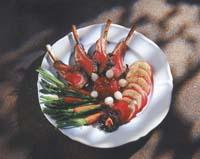
Undoubtedly, the colors condition the appearance of every object and, therefore, its appeal. Moving it to the food industry, colors give us information about the quality of food and its chemical composition.
In addition, these same compounds that give color are those that make attractive and nutritious foods. For example, the green of spinach, the orange of carrots and the red-blue of blackberries are due to chlorophylls, carotenes and anthocyanins, respectively. These are just a few examples. And for a healthy diet you have to eat a great variety of colors. That is, the plate should have the shape of a rainbow, so to speak in some way.
Precisely, the Color and Food Quality Group of the University of Seville studies the relationship between color and the composition of food. In front of this multidisciplinary team is the pharmacist Francisco Javier Heredia, formed by pharmacists, biologists and chemists. Although they study a large amount of food, they mainly research juices, wines, oils, honey or fruits and vegetables.
What colors, functions
The body needs more than 40 foods to stay healthy. It is impossible to find them on a single plate. Therefore, the solution is to take a lot of food for each of them to implant their entire feed element. "And it is that, depending on the ingredients contained in each food, such as chlorophyll, carotene and antocian, it will fulfill one or another function in the organism," says Heredia.
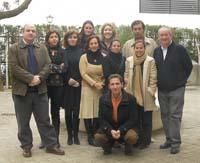
In the case of strawberries, cherries and raspberries, the red color is due to the anthocyanins. Some Antocians are believed to protect us from certain types of cancer. At present, it is often referred to the antioxidant capacity of certain substances and foods, which is also associated with anthocyanins. Tomatoes, on the other hand, are given red color the pigment called lycopene, which is the biggest enemy of certain toxins that can form cancer cells.
The orange color of oranges, carrots, etc. is due to the group of carotenoids. For example, carrots are very healthy, since they have a form of vitamin A necessary for the good state of sight and skin: beta carotene. Although these capacities are known, in recent years other benefits have been found for the compounds of the carotenoid group. Several studies have shown that some carotenoids are antioxidants and help protect the body from serious degenerative diseases such as heart disease and some types of cancer.
"The more intense the color of oranges, the more carotenoids and provitamins A. The same happens with tomatoes; the more red they are, the more viscous they have," says Heredia.
The green color provided by chlorophyll pigment is the predominance of vegetables and, in general, green foods can be the healthiest. That is, vegetables. The vegetables and plants of this color have an alkalizing function in the body and are an excellent source of natural fibers.
New technologies New technologies

According to Heredia, "the relationship between color and quality of food is not subjective, it is totally objective." "Although food is the basic function of food, this function is not adequately valued when selecting food. Flavor, smell and color are of the same level from the point of view of quality.
In this regard, the Color and Food Quality Group of the University of Seville has carried out various studies on the quality and nutritivity of food. For this purpose, the researchers have used various techniques. For example, for optical color measurement, tristimulation colorimetry is mainly used. The identification and quantification of the pigments that color food is done by chromatographic methods and, finally, the analysis of the color/chemical composition relationship by multivariate statistical methods.
With all these techniques, researchers are able to study food chlorofilas, carotene and anthocyanins. All these pigments often condition the color and quality of the product.
Thus, it is essential to perform an optical measurement of the color, for which they mainly use tristimulate colorimetry. "Tristimulant colorimetry is based on measurements in three coordinates: tone, luminosity and saturation. We try to answer the following questions: What color is it? How many colors do you have? How much does it have light? This method allows to measure mathematically and objectively the color. In short, this type of colorimetry adapts the colors that the eye sees to a mathematical system", explains Heredia. The measurements are done immediately, the method is totally objective (it depends on the instrumentation, not the eyes of the human being) and does not affect the sample. This technology can be used, for example, in the tomato industry to separate tomatoes for one use or another, that is, for red tomatoes for tomato juices and greens for the rest of uses.
Quality color
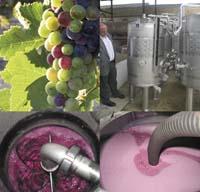
Heredia has clear that in the food industry color is not a good packaging. It is a basic feature that informs about the chemical components of food and their control. In fact, "by ripening the fruits, aging the wine or crystallizing the honey, for example, the color of the food changes and all these changes have to do with the quality of the food," says Heredia.
In this sense, the Food Color and Quality Group has developed various technologies to preserve the look of food. What happens, for example, with wines aging in warm climates? In these warm climates, the chemical composition of the wine changes and, therefore, loses color.
"Red wines have to be in the barrels for a long time and are often damaged by heat," adds Heredia. "That's why at a given time of the process, just before the fermentation, we decided to apply cold and keep the grapes at 5-10 degrees. In this way, the deterioration of the color and characteristics of the grape is avoided. In our experimental winery we keep the must at about 5 degrees Celsius", he stressed. Thus, the researchers manage to increase the color of black wine.
On the other hand, sometimes, before marketing food, they are subjected to physical processes that can also influence color. For example, when vegetables and fruits are made in boiling water, two effects are produced: on the one hand, toxins are eliminated and on the other, indirectly, they act on the cells responsible for color. As for meat, the process of curing for the extraction of the most lethal food toxin, the clostridium botulinum, directly affects the color. This treatment consists of the addition of nitrates for the extraction of toxin, which improve the color of food.
Another way to give color to food is the use of natural or artificial colorants or additives capable of immediately altering the appearance and smell of the product. "This is something that often depends on the needs of the market," says Heredia. "The consumer wants the strawberry yogurt to be strawberry color and strawberry aroma. I would say that if they could, the food industries would save dyes, but consumers want dyes."
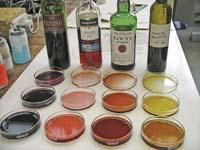
It is shown that colors have an important psychological influence on the smell and flavor of what we eat and drink. For example, a very green color fruit seems to us acidic, although it is often not so," he adds. So many times we can't deny that we eat in the eyes, so we will have to continue investigating the color and quality of food.
"In short, we analyze the chromatic characteristics of the pigments present in food and the chemical conditions that can influence the color of the final product," explains Heredia. Thanks to this laboratory work, the compounds and processes related to the color of food are identified and prevention lines are designed for the food industries, both of these colours and of food. That is, they help the food industries take steps to maintain a unique aspect of their products. Because the product with good look, whatever it is, is easier to sell.
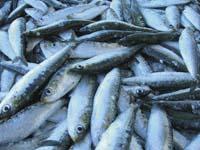
Buletina
Bidali zure helbide elektronikoa eta jaso asteroko buletina zure sarrera-ontzian











